My Boss Tried to Ruin My Christmas Plans—I Got the Last Laugh

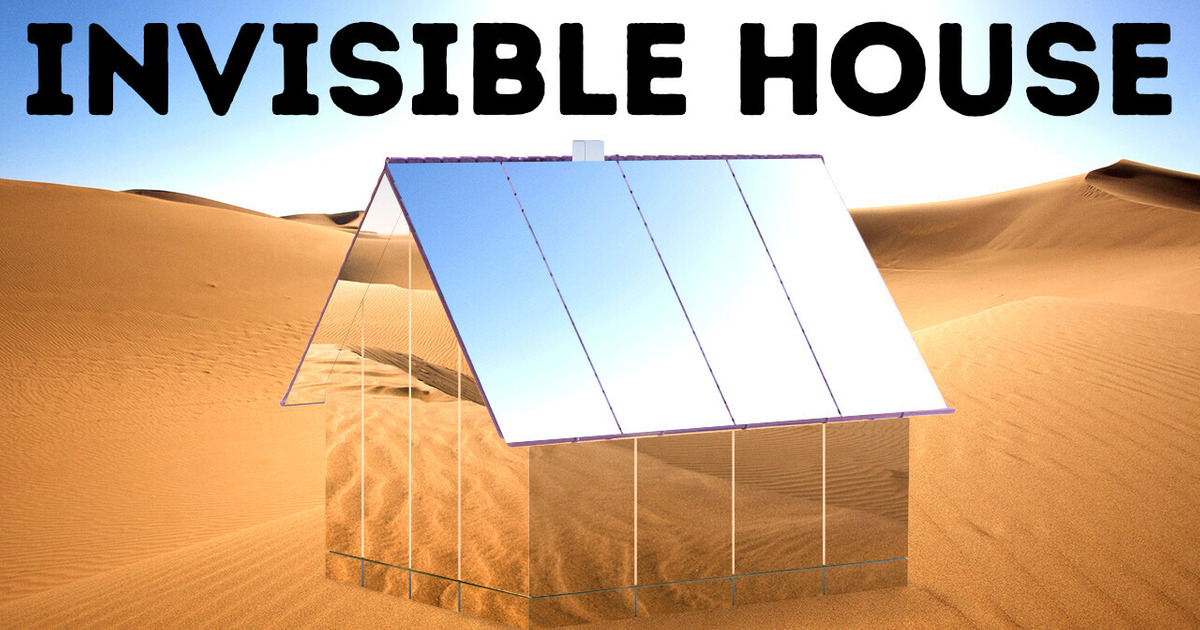
Ah, the desert welcomes you with challenging conditions of abandoned environments and extreme temperatures. Some of us would prefer dessert. Chocolate over sand and rocks. Oh, well. Just like cactuses and camels, buildings have to adapt to these conditions. Here are some examples of astonishing structures in deserts!
These structures are called “EARTHSHIPS.” They’re located in a New Mexico desert town. A large community of like-minded people lives in them. What’s even more interesting is that the location of these buildings is registered as dumpsters. Maybe it’s because all these structures are made out of old tires, bottles, and cans.
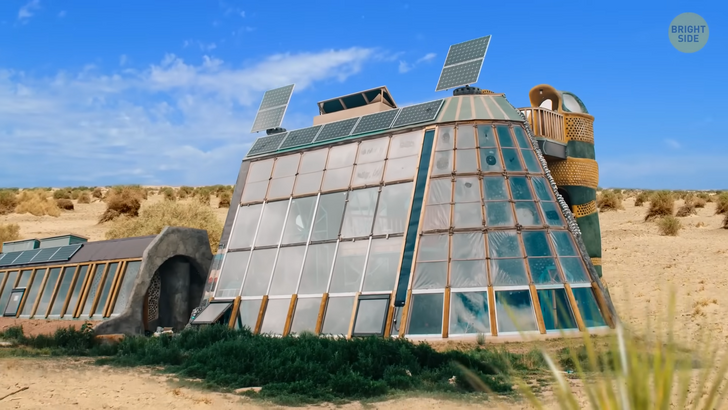
Earthships operate using green-building principles. About 40% of a typical Earthship is built with natural or recycled materials. Imagine the walls made up of hundreds of used tires packed with dirt. Then there are layers of floor-to-ceiling passive solar windows. They gather the sunlight during winter and reflect it in the summer to keep structures at a reasonable room temperature. You can see plants in corridors and glass bottles or aluminum cans stuffed inside walls. Certainly a distinct house in many ways.
Mike Reynolds is an architect who noticed the alarming waste and consumption levels in the 1970s. He designed a fully sustainable home out of cans back then. Almost 40 years later, he becomes the one who brings together all the other ‘Earthshippers.’ Reynolds drove a Mercedes, but it ran off of the vegetable oil he picked up at fast food restaurants in town.
A standard 2 bedroom 2 bathroom Earthship costs about $250,000 in this town. Yet, there are Earthships, like Dobson House, that can cost as much as $1.5 million. If you do it yourself — you know, with family and friends, you can eliminate the costs of labor, and it becomes relatively less expensive. Let’s assume you’re really going to build one. Where can it be? Anywhere. Earthships currently fit in the cold, dry air of Canada, as well as the hot and humid climate of Haiti.
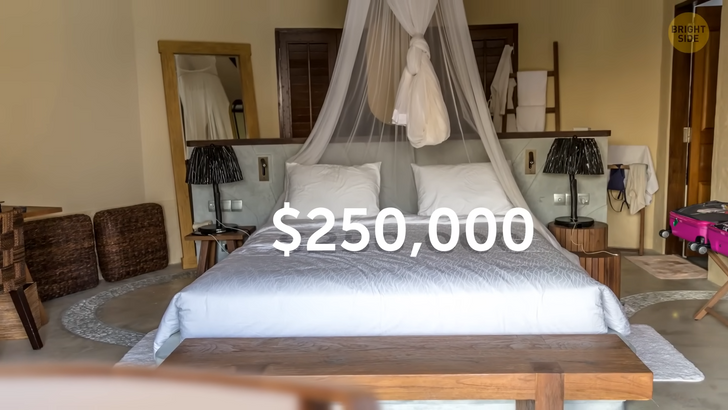
This is the Mirage Mirror House. It’s an installation set in the Southern California Desert. Mirage opened in 2017 as part of a contemporary art exhibition. It’s composed of mirrors. This minimalistic structure blends with the environment around it. The doors, windows, and openings have been removed to create an amazing experience. What you have in the landscape is reflected back to you. How it’s made? With mirrored surfaces! At night the distant lights refract from the mirrors; in the daytime, the sky is transformed into banks of clouds. There’s no fixed scenery in this house.
How about seeing a futuristic structure in the deep desert? Architects designed a concept home that pairs perfectly with Elon Musk’s Cybertruck. The house has a post-apocalyptic theme. I mean it when I say post-apocalyptic (it’s because I can’t say it) — the house is designed to survive in a disaster scenario.
The Cyberhouse has steel gates, the windows are armored, and the exterior walls are made out of super strong material. Modern House is controlled by “an autonomous geothermal heat pump.” To put it in less sci-fi terms, you can keep the internal temperature steady. This sleek house has an entrance that can fit the Cybertruck. After all, it’s inspired by it in the first place. Plus, the Cybertruck can be lifted to the second floor to be more secure.
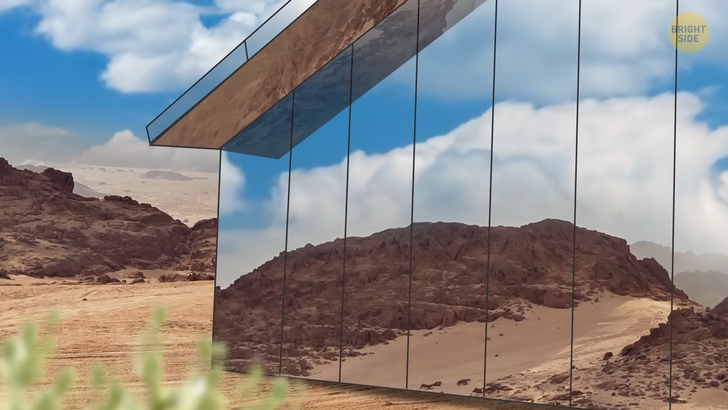
This is King Abdullah Petroleum Studies and Research Center in Saudi Arabia. Basically, it’s a laboratory in a desert. It was designed to demand minimum energy. The architecture has patterns on the walls and ceilings, giving reference to the local tradition of geometric form.
The next stop is Swartberg House in South Africa. This one is located near the Swartberg mountains but don’t get too excited. It’s on the edge of the Great Karoo Desert. It’s a four-bedroom apartment. It has a special temperature regulating system. The system works like a shield from the heat in the summer and as a sun trap in the winter.
You’re looking at The Grand Mosque of Djenne in Mali. This mosque is 52 feet tall. This is impressive because it’s made of only sticks and a special mix of mud and other natural elements found in the desert.
Petra is an ancient city hidden in the Jordan Desert. The structures are carved directly into red, white, and pink-colored sandstone cliff faces. It’s located among the canyons and mountains near the desert. The place was a trade center many years ago. You might already see the pictures of the impressive facade of the Treasury. This structure still holds many mysteries in it. For starters, scientists can’t explain how the Nabateans managed to create such a structure thousands of years ago.
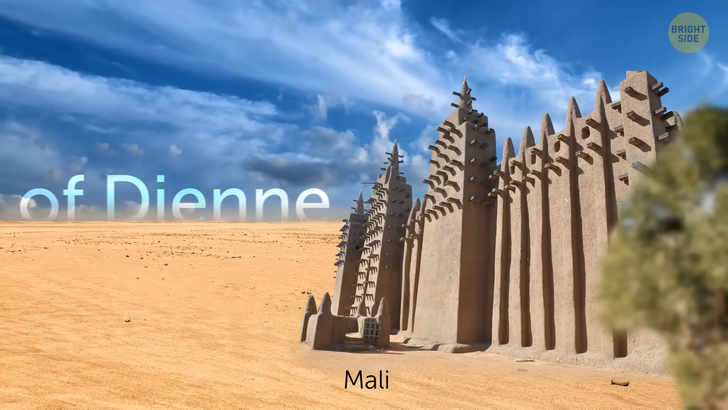
Did you know that there’s another mysterious place in the middle of the desert that has a similar structure to Petra? Mada’in Saleh was like a second capital of the Nabataean Kingdom. Yet another secret they left for us to decipher. It has over 100 decorated tombs and more than 1,000 non-monumental graves. Plus, inscriptions and cave drawings are also there, again surrounded by sandstones.
This wooden shack was once a post office. The structure is in the Tengger Desert of Mongolia. It’s surrounded by— nothing. Sand is the only thing that accompanies the lonely structure. The building is only 23 square inches [23 sq. in (15 sq. m)]. As you can guess, it didn’t get too many visitors. It was abandoned for over 35 years. Its fate changed one day when a woman discovered the building.
Ms. Zhang and her friend came up with an idea. They were going to reach businesses and people who wanted to send letters and postcards from the world’s loneliest post office without actually visiting the place. It worked! The post office rarely gets visitors in place, but it’s busy online. Over 20,000 letters and postcards were sent from the Desert Post Office in December 2021 alone. The place is about 6 miles off the nearest road. A post truck picks the letters up and hits the road for delivery. Eventually, they are shipped all over the world.
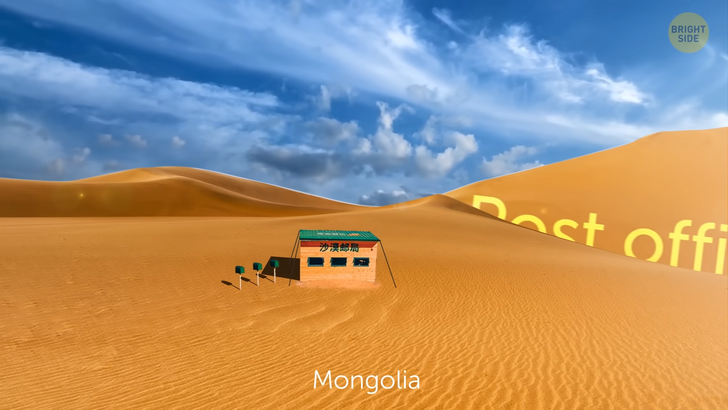
The second destination in Saudi Arabia is King Abdulaziz Center for World Culture. The building has an interesting design. It took nearly a decade to build this complex structure. It’s a 321 feet [321 ft (98 m)] tall tower which stands out with its look.
Stonematters Pavilion is a stone structure in Palestine. The structure spans a surface area of 93 square inches [93 sq. in (60 sq. m)]. It has been built entirely out of 300 interlocking stones that mutually support each other.
The Concave Roofs —and yes, they look like giant bowls— are designed that way to collect rainwater. The structure is in Iran. Interestingly, in Iran, the evaporation rate is 3 times faster than the world average. So this bow-like design comes in very handy. It captures the water in a way that the water can form a single mass as a whole before it evaporates. The outer shell of the roof system collects rainwater, but it also works as an additional shading. It makes air move freely, designed like a cooling mechanism for both roofs.
Ecolodge in Egypt is the next stop. The project is built in a place that overlooks the desert and is constructed using locally available materials like sun-fired bricks and palm wood. The building is an example of traditional architecture. There’s a water basin that lets in the air to keep the interior cool.
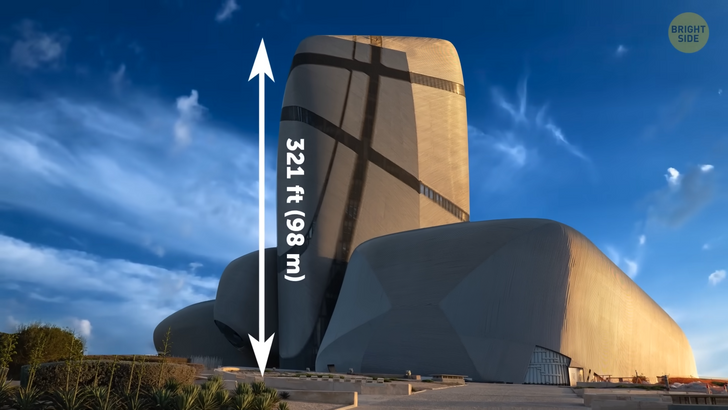
A worthy mention is the C.I.D. Interpretation Center in Chile. Chile’s Atacama Desert is among the top tourist destinations in the country. To help the tourists, architects designed a visitors’ center as part of the infrastructure for the wind farm.
Here the cold winter months don’t freeze people because the large windows make the most of solar heating. What’s even more interesting is that the building is designed to go completely dark at night. Imagine you somehow bumped into the building by accident.
Black Desert House is a building respecting the stars. At night this house goes completely dark. It dissolves into the night, so the stars can appear more prominent. So, any mysterious desert buildings you know that aren’t on this list? Let us know in the comments.











